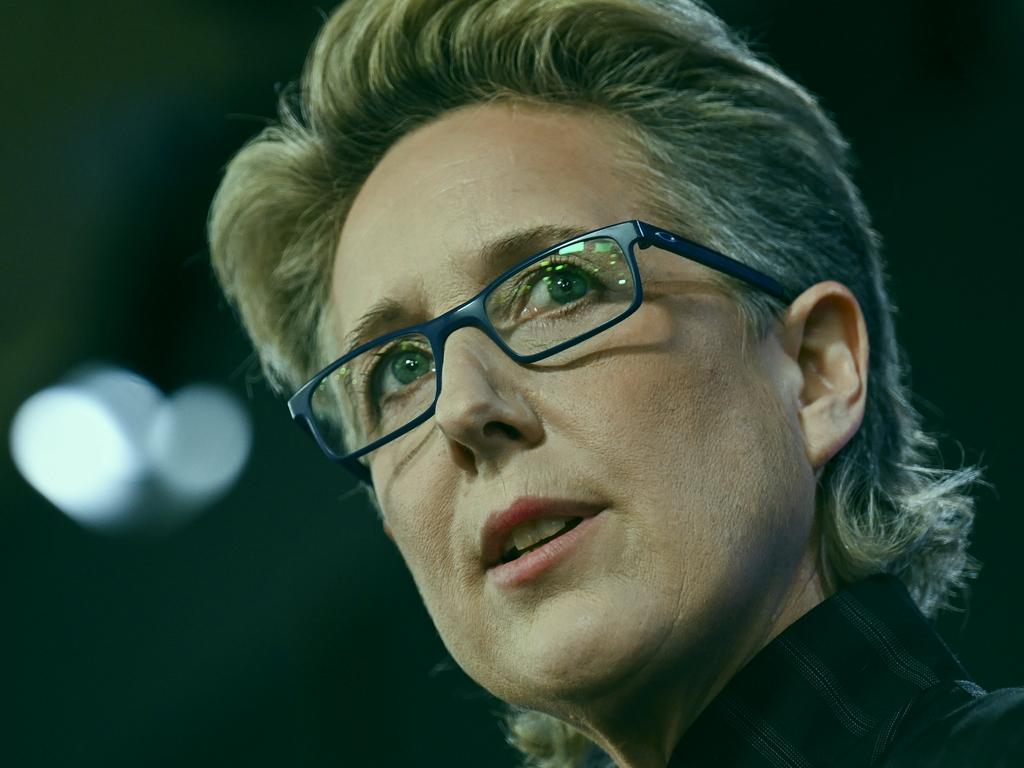Weaker wages data tempers expectations of RBA interest rate hikes
The RBA is expected to lift interest rates again in its battle with inflation, but wages data suggests Australia doesn’t face a wage-price spiral that would need much higher rates.
The Reserve Bank is expected to lift interest rates again to ensure inflation returns to its target, but wage data suggests Australia doesn’t face a prices-wages spiral which would need much higher rates.
Market pricing of the peak RBA cash rate fell from 4.35 to 4.2 per cent after the wage price index for the December quarter rose 0.8 per cent quarter-on-quarter and a decade high of 3.3 per cent year-on-year.
The data was well below consensus estimates of 1 per cent and 3.5 per cent respectively.
The market had priced in four more 25 basis point hikes in the cash rate – now sitting at 3.35 per cent – after Reserve Bank minutes showed the bank considered hiking by 50 basis points after a nasty rise in core inflation. But economists now saw less risk of second-round effects causing a prices-wages spiral.
The RBA’s latest forecasts saw the WPI peaking at 4.2 per cent at the end of 2023. But CBA expects annual wage growth to peak at 3.8 per cent in mid-2023.
“The WPI was consistent with our internal data – Australia is not facing a wage-price spiral,” said CBA’s head of Australian economics Gareth Aird. Real wages growth was deeply negative, but the data showed wages growth was in line with what the RBA wanted over the medium term.
Australian bond yields rose amid a sell-off in overseas markets after higher-than-expected purchasing managers indexes in the US and euro area. But while Australia’s 10-year yield rose 6 basis points to 3.87 per cent, it came off a high of 3.97 per cent. The policy-sensitive 3-year government bond yield rose 1.5 basis points to 3.58 per cent after a four-month high near 3.70 per cent.
The Aussie dollar fell to a near seven-week low of US68.27c as interest rate bets cooled.
The S&P/ASX 200 share index bounced off a six-week low to close down 0.3 per cent at 7314.5.
Aird said that based on RBA’s recent rhetoric, another two 25 basis point rate hikes were likely. But this “undershoot” on Australia’s benchmark wage index “lends weight to the case for the RBA to pause very soon in the tightening cycle”.
AMP senior economist Diana Mousina noted that wages growth including bonuses rose 3.5 per cent over the year, which was a “step down from the September quarter” pace of 3.8 per cent.
AMP expected wages growth to end the year around 3.8 per cent, which would be its highest pace since 2012, but well below the RBA’s forecasts of about 4.2 per cent.
“The RBA’s hawkishness will be challenged by today’s wages data and we expect that the RBA is closer to a pause in its tightening cycle than the market is predicting,” Ms Mousina said.
AMP sees one more rate rise in March, taking the cash rate to a “restrictive” 3.6 per cent, but then expects further increases will be hard to justify if data continue to show a slowing in the jobs market, weakening retail spending and a decline in forward-looking inflation indicators.
NAB said the wage data were reassuring given that the RBA Minutes had some discussion on whether Australia was really different to other countries, with one reason cited for a difference being “ … wages growth remained lower here than elsewhere”.
But while the WPI data are expected to be of some comfort to the RBA, it is also expected to look closely at next week’s GDP figures – which contain broader measures of labour compensation – as well as its business liaison, to round out the earnings picture ahead of its March meeting.
“With the RBA having reassessed the extent of domestic inflationary pressures, NAB sees the RBA hiking 25 basis points in March, April and May – taking the cash rate to 4.1 per cent – at which point there will be a strong case for a pause and assess,” said NAB senior economist Taylor Nugent.
RBC said the softer than expected wage data wouldn’t stop the RBA hiking two more times to a terminal rate of 3.85 per cent by April, but would “give the bank further comfort that we certainly don’t look to be on the precipice of a wage-price spiral.”
“However, we do note that one reason for the ‘disappointment’ is that only a small proportion of annual wage increases typically take place in the September quarter,” said RBC chief economist Su-Lin Ong. “For those in the private sector who did get increases, they averaged 4 per cent. This was down from 4.3 per cent in Q3, but well above any other quarter in the last decade. So with new private sector agreements still coming through at 4 per cent, underlying upward momentum in wage growth does remain, even if it may take time to show in aggregate.”
Goldman Sachs chief economist Andrew Boak cautioned that WPI excludes changes in aggregate labour costs associated with “job switching” and promotions, as well as super payments and other non-wage payments.
“Given these factors tend to add to growth during tight labour markets, WPI growth is likely understating growth in aggregate labour costs. Broader measures of labour costs will be released in next week’s national accounts.”






To join the conversation, please log in. Don't have an account? Register
Join the conversation, you are commenting as Logout